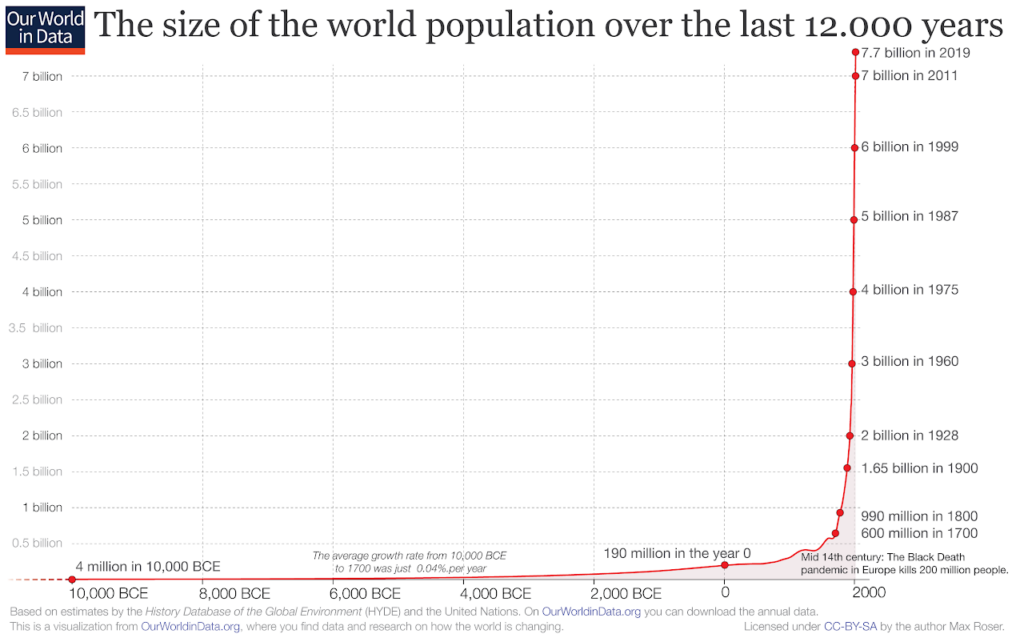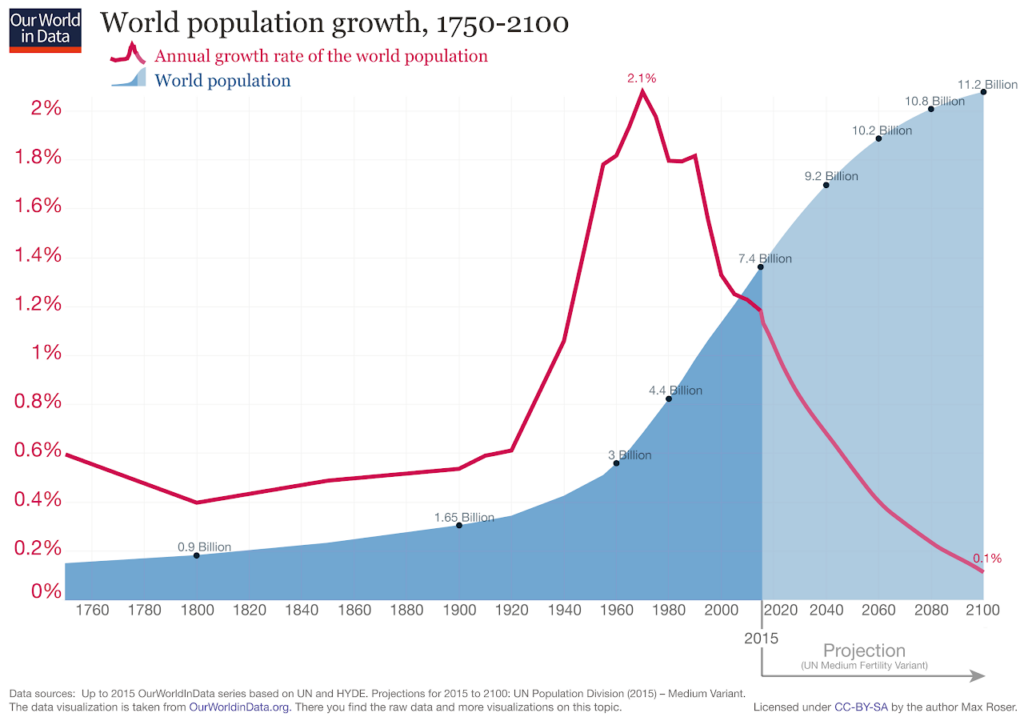Population Growth
Through better and better tools and technologies, our species has been able to make better and better use of food sources in the course of evolutionary history. Our social skills also enabled us to work together in ever-larger groups where we could divide work and share resources. Through cooperative childcare, women were also able to have children in quicker succession than if they had to raise them alone.
For these reasons, the total population of our species has gradually increased over the course of history, occasionally shrinking due to diseases, natural disasters, or wars. For most of the history of our species, the total population was less than 1 million. Improved technologies, including improved food production and protection against infectious diseases, increased average life expectancy. In 1800, the total population of our species already reached one billion. Over the past 50 years, our population has tripled! However, the growth rate has declined more and more, especially in Europe, North America and Japan.
Many different predictions exist about the future development of the world population. Many people wonder if our population will see the same fate as other, earlier civilizations, or as “predator” populations overusing their prey population too fast – a dramatic collapse of our population due to overpopulation and overuse of resources.
What impact will today’s population growth have on the future evolution of our species?
Will our population continue to increase? Will certain processes restrict population growth? Or do we have to consciously intervene in any way?
Notice the difference between population growth and growth rate in the following graphs.
more data and information about population growth:
https://ourworldindata.org/world-population-growth



